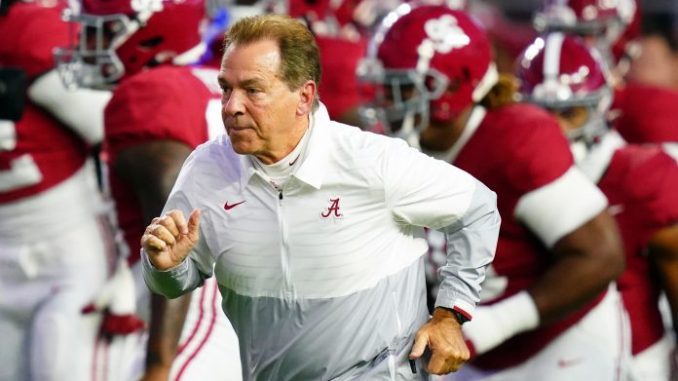
ick Saban’s coaching reign has come to an end. His dominance over college football, however, will forever linger in the lore of the sport. Saban, who won seven national championships — more than any other major college football coach — and turned Alabama back into a national powerhouse with six of those titles in 17 seasons, announced his retirement Wednesday.
According to a statement from Saban, “The University of Alabama has been a very special place to Terry and me.” “We have cherished every second of our 17 years as Alabama’s head coaches and our integration into the Tuscaloosa community. It is more important to consider our legacy and method than simply counting the number of games we win and lose.
“We always made an effort to act morally. Being the best player possible, helping players produce more value for their future, and helping them succeed in life as a result of being a part of the program was always the aim. We hope to have accomplished that, and Alabama will always be our home.
After assuming control in 2007, 72-year-old Nick Saban brought the Crimson Tide team, which had been managed by Paul “Bear” Bryant, back to the pinnacle of collegiate football. As he continued to win, Saban’s notoriety in the state of Alabama rose to regal proportions.
He ruled the sport for a while, and there wasn’t much that could be done to stop him.
Terry, Saban’s wife, wrote on the Nick’s Kids Foundation Facebook page about their “incredible run” at Alabama.
No school could be regarded as a reliable danger to the Tide until the ascent of Dabo Swinney’s Clemson teams in the late 2010s and subsequently Smart’s Georgia Bulldogs.
In the midst of a significant transformation in college football, Nick Saban has stepped down. On social media, Colorado’s Deion Sanders, a coach who has attempted to profit off players’ financial intervention through their on-field performance, declared that “College Football just lost the GOAT.”
Whoa! Though not this quickly, I knew it would come one day,” he wrote. “The GOAT has been chased away by the game’s drastic changes. College football players, let’s hold up mirrors and speak frank about what we see.
See Also: How Deion Sanders Could Permanently Alter College Football
After spending two years in the NFL with the Miami Dolphins, head coach Nick Saban went back to college football to bring back one of the most illustrious teams in the sport, which had not won a national championship in fifteen years. Including appearances at Toledo, Michigan State, and LSU, where he also won a national championship, Saban has a 297-71-1 record as a college head coach. But it was at Alabama that he solidified his reputation as one of the all-time great college football coaches.
In addition to coaching Alabama’s first four Heisman Trophy winners, Saban produced a number of NFL players, going 206-29 with an 87.7% victory percentage. 44 first-round draft picks were generated by his teams, including Bryce Young, the top quarterback from the previous season.
Along with the new NIL and transfer restrictions, he also adjusted to the changing times of up-tempo offenses during that period, turning out high-scoring teams after defeating some of the finest defenses in the country.
In his one season at Toledo, he won the Mid-American Conference championship in 1990. For four seasons, Saban served as NFL’s Cleveland Browns defensive coordinator under Bill Belichick. He then became the first Michigan State coach to lead his first three teams to bowl games, and he later led LSU to the

Leave a Reply